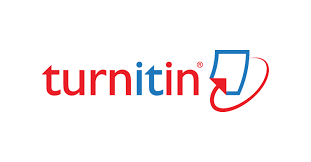Using Graphic Organizer to Improve the Students’ Reading Comprehension Achievement
DOI:
https://doi.org/10.32493/ljlal.v2i2.9308Keywords:
reading comprehension, graphic organizer, strategy, quasi experimentAbstract
This study investigated the use of a graphic organizer reading strategy in improving the students’ reading comprehension achievement. It was aimed to find out to what extend the improvement of the students reading comprehension after being treated using the graphic organizer strategy. This research also wanted to check the differences in the result between the class which used the graphic organizer and the class which did not apply a specific reading strategy. This study was conducted at the grade 11 students of SMK Sasmita Jaya Tangerang Selatan. This research administered cluster random sampling in taking samples and decided two classes as the same samples. One class was treated using a graphic organizer and the other class was not treated using any specific kind of strategy or conventional strategy. The method of this research was quantitative research under quasi-experimental research. A quasi-experimental design was used to know the result after specific treatment was applied. After collecting the data, then it was analyzed using SPSS. Based on the result of the data analysis, it was found that applying the Graphic Organizer reading strategy in reading lessons could improve students’ reading comprehension achievement.
References
Arikunto, S. (2012). Dasar-Dasar Evaluasi Pendidikan. Jakarta: Bumi Aksara.
Bethune, K & Wood, C. (2013). Effects of Wh-Question Graphic Organizers on Reading Comprehension Skills of Students with Autism Spectrum Disorders. Education and Training in Autism and Developmental Disabilitites. 48. 236-244.
Catherine S. C.. (2002). Reading for Understanding: Toward an R&D in Reading Comprehension.
Arlington: RAND Education.
Lynn, J. & Miranda, W. (2011). Effect of Graphic Organizer on the Reading Comprhension an English Language Learner with a Learning Disability. Second Language Studies in Fall, in 30 (1). 95-183.
Grabe, W. (2009). Reading in Second Language: Moving from Theory to Practice. New York: Cambridge University Press.
Harmer, J. (2011). The Practice of Language Teaching. 4th ed. London: Pearson Longman. Hartoyo. 2011. Language Assessment. Semarang. Pelita Insani.
Jian, X & William G. (2009). Building Reading Abilities with Graphic Organizers. In R. Cohen (Ed), Teaching Reading. Alexandria, V: TESOL.https://humboldtcollegehandbook.wikispaces.com/file/view/ Jiang_ Grabe Building+Reading+Abilities. P.5-32. Assessed on. February, 12, 2014.
Lehr, F, Osborn, J, & Hiebert, E. (2005). A Focus on Comprehension. California: PREL.
Michele H. (2002). Reading Comprehension: strategies for elementary and Secondary School students. Virginia: Lynchburg College.
Nuttal. C. (1996). Teaching Reading Skill in Foreign Languag. Great Britain: The Bath Press. Premalatah, R. & Sam, P. (2013). Using Graphic Organizer to improve Reading on
Comprehension Skill for the middle School ESL Student. English Language Teaching Canadian Center of Science and Education. 6(2). 23-35
Snow. C, & Chair. (2002). Reading For Understanding: Toward an RnD Program in Reading Comprehension. Santa Monica: RAND.
Scoot, S. E. (2009). Knowledge for Teaching Reading Comprehension: Mapping Terrain. Arbor: ProQuest. LLC.







